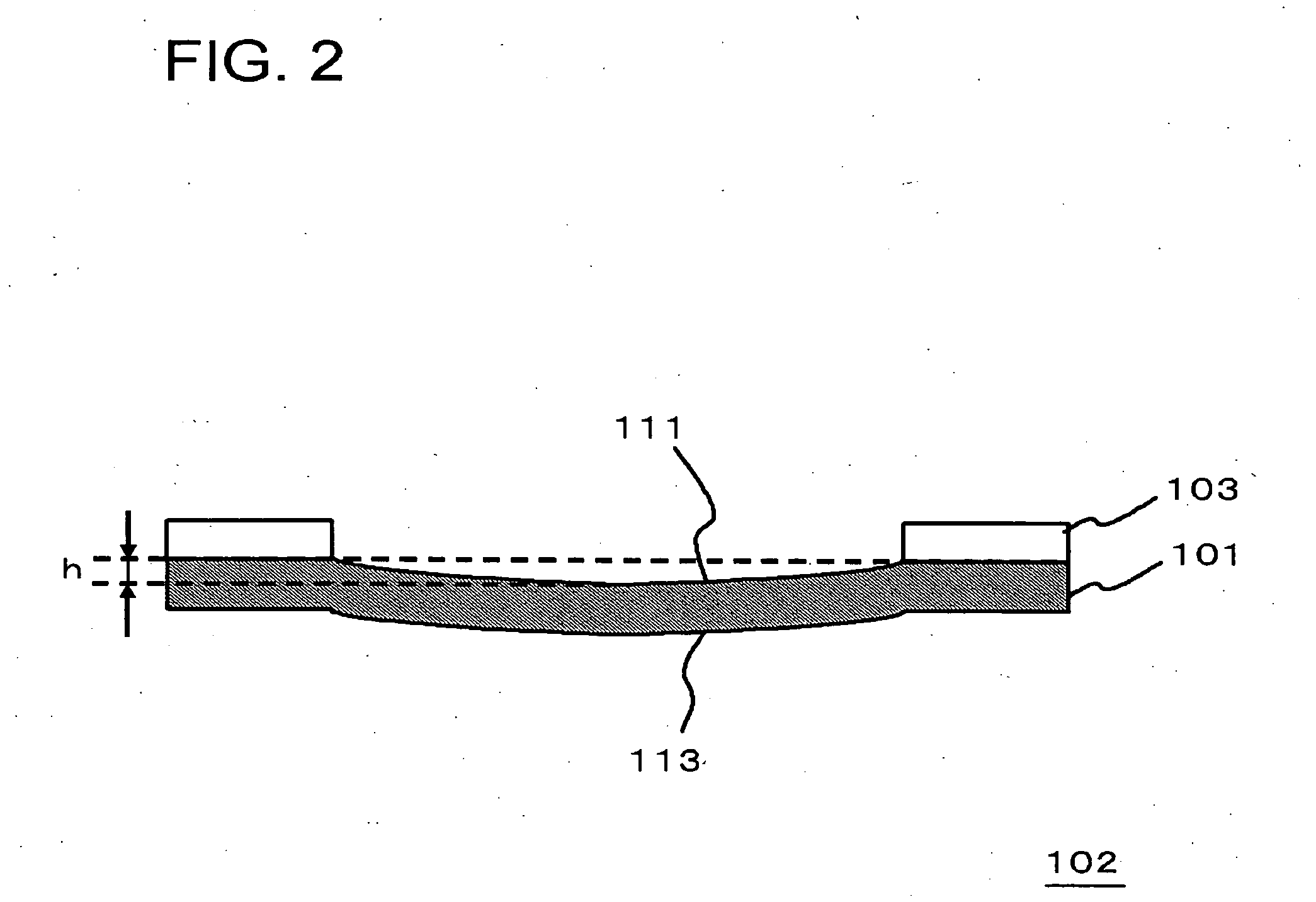Interposer and semiconductor device employing same, and method for manufacturing semiconductor device
a technology of semiconductor devices and interposers, which is applied in the direction of semiconductor devices, semiconductor/solid-state device details, electrical devices, etc., can solve the problems of poor stiffness of the interposer, reduced device production yield, and inability to meet, so as to improve the production yield of the semiconductor device 100, improve the flatness of the surface, and reduce the effect of bending
- Summary
- Abstract
- Description
- Claims
- Application Information
AI Technical Summary
Benefits of technology
Problems solved by technology
Method used
Image
Examples
first embodiment
[0049]FIG. 2 is a cross-sectional view, illustrating a configuration of an interposer of the present embodiment. FIG. 1 is a cross-sectional view, illustrating a configuration of a semiconductor device produced by employing the interposer shown in FIG. 2. The interposer shown in FIG. 2 is an interposer, which is composed of an organic resin substrate 101, and on one surface of which a semiconductor device (semiconductor chip 105 shown in FIG. 1) is mounted, and has a convex curvature in a side of a back surface 113 opposite to the device mounting surface 111. A height of a highest point of the device mounting surface 111 from a flat plane is, for example, 10 μm or more and 150 μm or less, when an organic resin substrate 101 of the interposer is disposed on the flat plane so that the back surface 113 faces toward an upward direction. In addition, a stiffener 103 that surrounds the device mounting region is joined to the device mounting surface of the organic resin substrate 101 to fo...
second embodiment
[0084] While the curvature is formed by disposing the organic resin substrate 101 and the stiffener 103 between the PET films and evacuating and releasing the atmosphere in first embodiment, another procedure for creating a curvature may also be employed, in which an interposer and a stiffener may be aligned onto a jig having a concave portion corresponding to a level of the curvature h, and a punch having a convex portion that inversely follows the concave portion is lifted down from the upper direction to form a concave curvature in the side of the device mounting surface 111 while adhering the interposer with the stiffener. Descriptions of the exemplary implementation employing a metal mold will be made as follows.
[0085]FIG. 8 is a perspective view, illustrating a configuration of an interposer of the present embodiment, and FIG. 9 is a cross-sectional view along line B-B′ shown in FIG. 8. A multiple-layered member 150 that shown in FIG. 8 and FIG. 9 includes an interposer compo...
example 1
[0096] A semiconductor package (FIG. 1 and FIG. 2) was manufactured employing the process described in first embodiment. Materials of each of the layers in the organic resin substrate 101 were,
[0097] core: BT resin;
[0098] built-up: metallic copper (Cu), four layers for each faces; and
[0099] solder resist: photosensitive epoxy resin.
Further, a Cu plate having a thickness of 0.66 mm and having an opening formed therein was employed for the stiffener 103.
[0100] Further, the dimension of the organic resin substrate 101 was 50 mm square, and the dimension of the semiconductor chip 105 was 16.47 mm square. In addition, the thickness of the organic resin substrate 101 was 1.08 mm.
[0101] The multiple-layered member 102 was manufactured by employing the jig shown in FIG. 3. Thickness of the device mounting surface-side PET film 131, the PET film 133 and the PET film 135a to the PET film 135c were selected to be all 25 μm, and a weighting of about 120 Ns was applied thereto along a dir...
PUM
 Login to View More
Login to View More Abstract
Description
Claims
Application Information
 Login to View More
Login to View More - R&D
- Intellectual Property
- Life Sciences
- Materials
- Tech Scout
- Unparalleled Data Quality
- Higher Quality Content
- 60% Fewer Hallucinations
Browse by: Latest US Patents, China's latest patents, Technical Efficacy Thesaurus, Application Domain, Technology Topic, Popular Technical Reports.
© 2025 PatSnap. All rights reserved.Legal|Privacy policy|Modern Slavery Act Transparency Statement|Sitemap|About US| Contact US: help@patsnap.com



